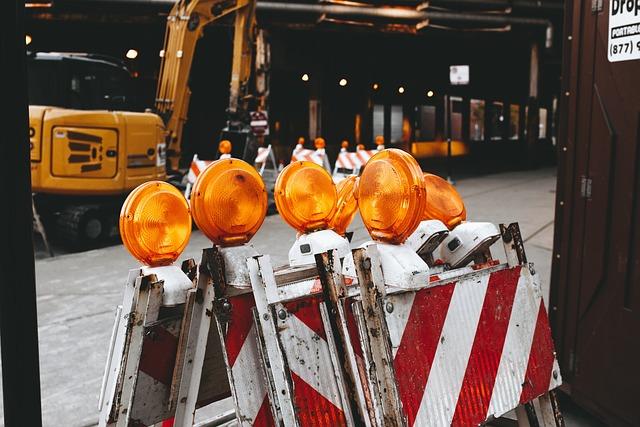Title: Exploring the Rise of Urban Crime in Pakistan: A Deep Dive
In the bustling metropolises of Pakistan, where vibrant street markets overflow with color and life, a shadow lurks beneath the surface—an unsettling surge in urban crime. As cities like Karachi, Lahore, and Islamabad continue to urbanize, the very fabric of society is being tested by rising challenges that threaten safety and stability. With a complex interplay of socioeconomic factors, rapid population growth, and shifting demographics, the landscape of crime is evolving in ways that demand attention and analysis. This article embarks on a comprehensive exploration of the factors driving this phenomenon, delving into not just the statistics, but the stories behind the numbers, and examining the responses from communities and authorities alike. As we navigate this intricate issue, we aim to illuminate the realities of urban life in Pakistan, uncovering the intricacies of a society caught between tradition and the tumultuous tides of modernity. Join us as we venture into the heart of this pressing concern, inviting reflection on its implications for the future.
Understanding the Factors Behind Urban Crime Increase in Pakistan
The rising tide of urban crime in Pakistan can be attributed to a confluence of socio-economic and political factors that together create a fertile ground for criminal activities. Rapid urbanization has led to overcrowded cities, overwhelming the existing infrastructure and law enforcement agencies. As more people migrate to urban centers in search of better opportunities, the inherent struggle for resources often escalates into crime. Additionally, the lack of education and job opportunities can lead to disillusionment among youth, making them more susceptible to engaging in criminal behavior as a means of survival.
Beyond socio-economic issues, political instability plays a significant role in exacerbating crime rates in urban environments. Communities may experience a breakdown in trust towards law enforcement agencies, which often struggle with corruption and inefficiency. Factors such as inequitable governance, inadequate policing, and weak community policing initiatives diminish public confidence in their safety. Furthermore, the influence of gangs and organized crime syndicates can proliferate in environments where law enforcement is perceived as ineffective, leading to an increase in violent crime and an overall sense of insecurity among residents.

Analyzing the Impact of Socioeconomic Disparities on Criminal Activity
Socioeconomic disparities serve as a critical backdrop against which urban crime flourishes, particularly in rapidly growing cities like those in Pakistan. The increasing gap between the affluent and the impoverished can lead to heightened frustration and desperation among lower-income groups. This often cultivates an environment where crime becomes a viable option for survival. Factors such as unemployment, lack of education, and inadequate access to social services contribute significantly to this dilemma. For instance, areas with high unemployment rates often experience a surge in property crimes, as individuals seek alternative means to provide for themselves and their families. Some of the main drivers include:
- Poverty: Limited economic opportunities hinder social mobility.
- Education: Low literacy levels restrict job prospects.
- Infrastructure: Poor urban infrastructure exacerbates the problem.
The cumulative effect of these disparities manifests not just in increased criminal activity but also in a general sense of insecurity among the community. These neighborhoods become fertile grounds for gang formation and drug-related activities, where marginalized youth find a sense of belonging and purpose. A comparative analysis of crime rates across different socioeconomic brackets reveals stark contrasts. Below is a simplified overview:
| Socioeconomic Status | Crime Rate (per 1,000 residents) |
|---|---|
| Lower Income | 35 |
| Middle Income | 15 |
| Upper Income | 5 |
This table illustrates how lower-income areas grapple with significantly higher crime rates, demonstrating a direct correlation between socioeconomic status and criminal activity. Thus, understanding the impact of these disparities is vital for developing effective interventions and policies aimed at reducing urban crime in Pakistan.

Strategizing Community Engagement to Combat Rising Crime Rates
To effectively tackle the increasing urban crime rates in Pakistan, it’s imperative to mobilize local communities and leverage their inherent strengths. By fostering a culture of collaboration between residents, law enforcement, and local organizations, we can create a unified front against crime. This can be achieved through various initiatives, including:
- Community Watch Programs: Encouraging residents to keep an eye on their neighborhoods and report suspicious activities.
- Skill Development Workshops: Equipping community members with skills that promote employment and reduce the allure of criminal activities.
- Safe Spaces for Youth: Establishing recreational facilities and mentorship programs to engage young people in constructive activities.
- Crime Awareness Campaigns: Disseminating information via local media and social platforms about preventive measures and resources available to community members.
Furthermore, the relationship between community engagement and the reduction of crime can be further enhanced by utilizing data and feedback mechanisms. Regular community meetings can serve as a platform for gathering insights from residents about their concerns and suggestions. Additionally, implementing a community feedback system can help in assessing the effectiveness of initiatives. The table below outlines potential engagement metrics:
| Engagement Activity | Target Metric | Frequency |
|---|---|---|
| Neighborhood Watch Meetings | Increase in Reporting | Monthly |
| Skill Development Workshops | Participants’ Employment Rate | Quarterly |
| Youth Engagement Programs | Reduction in Youth Crime | Biannually |
| Crime Awareness Campaigns | Community Knowledge Increase | Annually |

Evaluating Policy Reforms for Enhanced Urban Safety and Security
The pressing issue of urban crime in Pakistan calls for a thorough evaluation of existing policy reforms aimed at enhancing safety and security. An effective strategy should not only address immediate concerns but also foster long-term resilience against crime. Policymakers must consider a multidimensional approach that encompasses community engagement, law enforcement collaboration, and technological innovation in crime prevention. Importantly, enhancing urban safety is as much about preventing crime as it is about rebuilding community trust and ensuring that citizens feel secure within their neighborhoods.
To effectively implement and evaluate these reforms, it is crucial to collect data systematically and analyze its implications. Policymakers should focus on the following aspects:
- Community Policing Initiatives: Strategies that encourage collaboration between law enforcement and residents to prevent crime.
- Public Awareness Campaigns: Efforts to educate the public about available safety resources and crime reporting mechanisms.
- Investment in Technology: Utilizing surveillance systems and crime analytics to proactively tackle hotspots of urban crime.
By employing these tactics, cities can work towards not only reducing crime rates but also improving the overall quality of urban life. The journey involves continuous assessment and adaptation of policies, ensuring that they meet the changing needs of urban communities effectively.
Final Thoughts
As we conclude our exploration into the complexities surrounding the rise of urban crime in Pakistan, it becomes clear that this issue is not just a matter of statistics and headlines—it is a multifaceted challenge that intertwines with the very fabric of society. The surge in crime rates is a reflection of deeper socioeconomic disparities, rapid urbanization, and systemic issues that require holistic solutions.
While the narratives of fear and conflict often dominate discussions, it is essential to acknowledge the resilience of communities striving for safety and justice. From grassroots initiatives to policy reforms, the responses to this rise in crime highlight the potential for change, signaling that hope can thrive even in the face of adversity.
Looking forward, the path toward reducing urban crime in Pakistan will demand collaboration across sectors—government, law enforcement, civil society, and citizens alike. A proactive approach, grounded in understanding and empathy, may illuminate ways to tackle the root causes of crime, thereby fostering urban environments that are not only secure but also vibrant and equitable.
In the pursuit of a safer future, it is crucial that we continue to engage in dialogue, advocate for investigative efforts, and support innovative solutions that resonate with the diverse voices of urban Pakistan. Together, we can pave the way for a society where every individual can navigate their city with confidence, unburdened by the shadows of crime.



